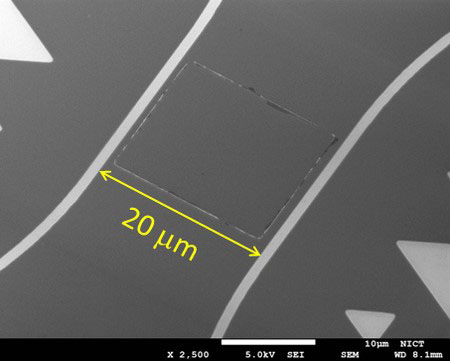A new structure that enables photon detection NICT

The National Institute of Information and Communications Technology (NICT) has devised a new structure for superconducting strip photon detectors that enables highly efficient photon detection even when the strip width is widened. The world’s first successful development of a “superconducting wide-strip photon detector” with a wide range of
This technology makes it possible to solve the problems of low productivity and polarization dependence, which have been problems with nanostrip type devices, and is applicable to a wide range of cutting-edge technology fields, including quantum information and communication technology and quantum computers. It is expected that this technology will be applied and the social implementation of such technology will be accelerated.
NICT has developed a “High Critical Current Bank (HCCB)” structure in photon detectors composed of superconducting strips, which enables highly efficient photon detection even when the strip width is expanded. They created a novel structure known as a “Superconducting Wide Strip Photon Detector” (SWSPD) with a width of 20 micrometers, which is more than 200 times wider than the conventional nanostrip type.
